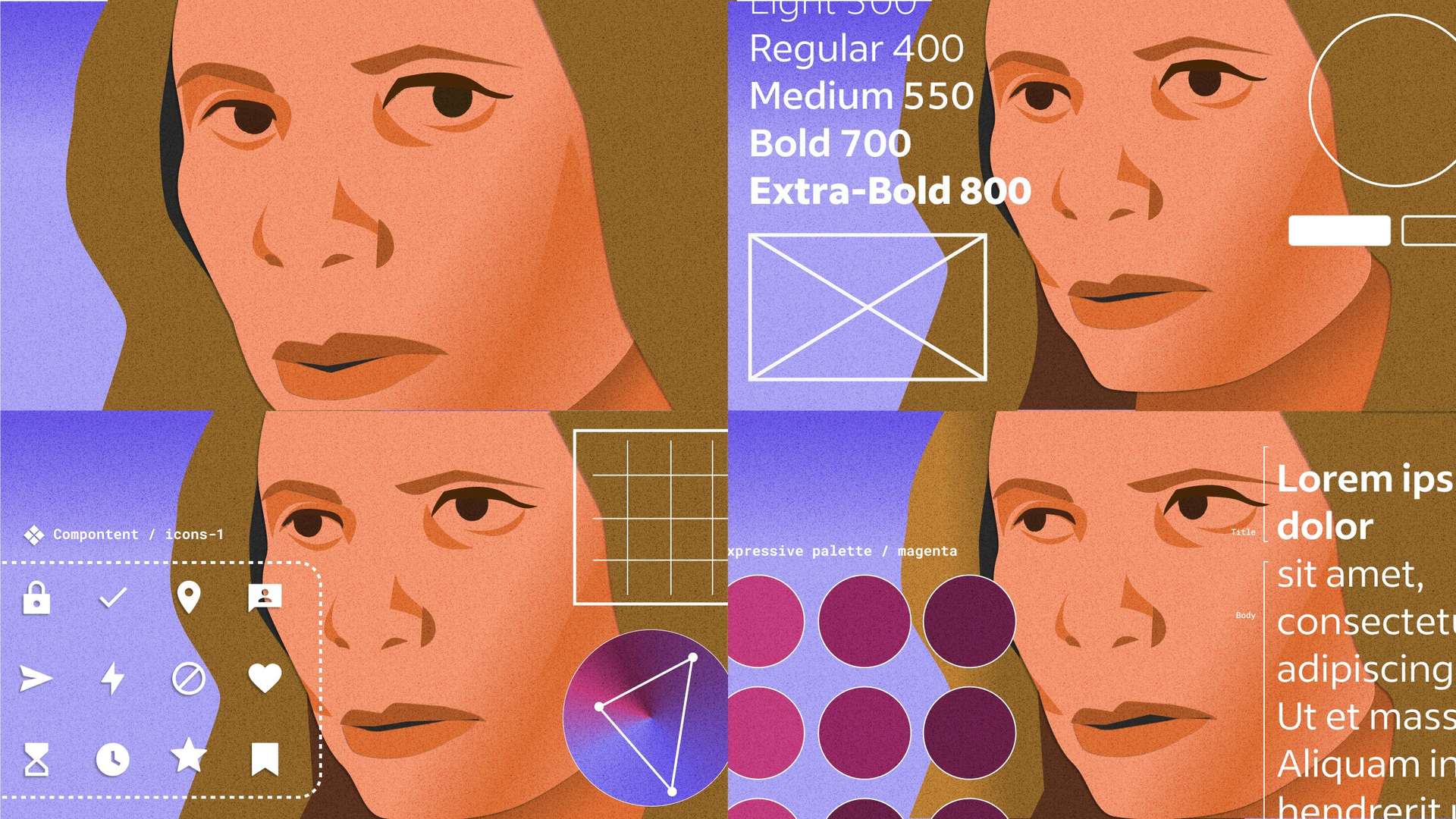I cut my teeth as a researcher in an academic world. Since switching to UX research, I’ve been impressed by how dedicated UX researchers are to treating users with care and ethical concern, much like the researchers I met in academia. One of the highlights of working in the field is the diligent focus on the user and thoughtfulness about research topics and structures that most researchers share.
The good news is that there are proven approaches that any UX researcher can use to help make sure their studies are as ethical as possible. In academia, researchers use a straightforward system of checks and protocols that UX can easily adopt. Here, I want to share some of those techniques. It’s my personal opinion that these practices can help UX researchers and their teams ensure that their good intentions match the satisfaction, safety, and accessibility needs of their users. Read on to learn why, and how to implement them.
What is ethical research?
Let’s talk history first. The Belmont Report, published in 1979, was the first national effort to outline the basic principles of ethical standards in federally-funded research. It stemmed from some highly publicized ethical breaches made by scientists in pursuit of knowledge (for example, Tuskegee, Milgram’s authority study, and others). Those principles—respect for persons, beneficence, and justice—are the standards in academic and governmental research.
Around the same time the Belmont Report was published, the International Chamber of Commerce used those same principles to develop a modified code of ethics for market research. Sure, the scope of their work in market research is different from the more academic and federally funded research of the Belmont Report. But together, these reports provide useful context to build on current UX research ethics practices and procedures.
Research principle 1: Respect people
The Belmont Report established two factors that comprise the notion of respect for persons. First, individuals have the right to autonomy. Second, they have the right to protection from harm as autonomous agents.
Give informed consent
It’s easy to assume that participants know what they’re getting into when we recruit them to participate in our studies. We tell them a little about what they will be doing, and maybe we tell them they can leave if they want. But researchers can also take a bit more time to consider ensuring participants know exactly what they’re being asked to do, how their information will be used, who will see their information, and how they can withdraw from the study whenever they like.
Academic researchers are expected to go over an official consent document with participants. Created by the Institutional Review Board, this document outlines participants’ rights, whom they can contact about questions that arise after the study is complete, what potential risks there are (if any), and what benefits they may receive from participating.
This may feel like an overstatement to UX researchers, but in practice it doesn’t have to be burdensome. Here’s what it can look like:
- Before each study begins, outline the purpose of the study with your research team in an accessible document for participants. Clearly describe the potential risks (if any) of participating in the study. Include the contact information of the research lead or someone who can answer questions about their participation and highlight their rights as a participant. Perhaps most importantly, explain how their information and identity will be used and protected throughout the study and results report.
- At the beginning of any moderated study, ensure participants understand what to expect. Give participants an informed consent document, but take a few minutes to review the document with them line by line, too. Demonstrate to them that this isn’t just a signature form. It also clarifies your commitment to them as people and participants. This principle also is recommended by David Travis and Philip Hodgson in their book, Think Like a UX Researcher.
- Use language your participants can understand. Make sure it’s written in everyday language. In other words, don’t include research or industry-specific jargon. If you’re unsure whether the participants understand what they’re signing, ask them to repeat it back to you in their own words. Be sure to ask them what questions they have, and give them some time to think about whether they do.
These steps might add a few minutes to an already packed testing schedule, but the payoff is in the trust you build with participants and their sense of security and equity in the process.
Protect users’ privacy
Help participants understand that the interviewer and their research team may not be the only people who see, hear, or read their responses. Other stakeholders, blog audiences, and conference attendees may also get access to their information. Even when anonymous, participants have the right to know who might later see or hear their interview during discussion of the study’s results. If you aren’t sure where all the information might end up, let them know the range of possibilities. The ICC research ethics document further adds that explicit consent must be obtained if there is the potential of a participant’s identity being used. As an extra layer of care, I recommend taking these steps even if their identity will be inferred.
Research principle 2: Do the most good and least harm
Beyond the common respect for research participants, the Belmont Report suggests that the research must meet standards above the simple obligation to do no harm. Additionally, researchers should do all they can to maximize benefits and minimize harm. This one, too, may seem like an overstatement for UX research. The odds of doing harm are very low. We’re asking questions—not subjecting participants to psychological or medical procedures, or asking them to talk about personal experiences that trigger personal trauma. Still, the more trust we build in our participants and the more value we offer them, the more willing and able they are to give us their best insights.
Maximize the benefits
One great thing about UX research is the practice of compensating participants for their time with money or other tangible benefits. In academia, all I had to offer was a nice “thank you” at the end of an interview. But beyond the benefit of some cold, hard cash, UX researchers should consider highlighting for participants that their efforts will benefit all customers who will have a better experience thanks to them. People generally want to know they’re making the world a better place, no matter how niche. Stress what they stand to gain by working with you now on making an app easier to use. This is another way to help them see that their time doing these tests or interviews is helpful.
—
Is this article helpful? Subscribe to get occasional emails with new stories like it.
—
Minimize the harm
It’s difficult to define harm in a concise, clear way. Harm is possible in the course of our everyday lives, which may or may not be distinct from potential harms that arise while participating in a research study. How can we avoid either over- or understating risks of harm that participants may experience during our research projects? We aren’t likely to have a significant risk of harm beyond some participant frustration or embarrassment if our product isn’t very usable or if they can’t figure something out about the process or product.
To minimize the risk of harm, UX research teams can put plans and protocols in place should some aspect of a study hurt a participant or present some kind of danger to the study itself—either central or peripheral.
Once, while observing a virtual interview, a UX researcher friend of mine realized that the participant was having some kind of mental break from reality. The participant was saying nonsensical things, making comments unrelated to the topic of the interview, and began spiraling into conspiracy theories and talk about aliens.
As a researcher, it’s easy to freeze at that moment, unsure whether to continue the interview as if nothing was happening or stop and figure out how to help the participant. Being virtual meant there was no physical risk to the researcher, but that wasn’t the case for the participant. What are the ethical and moral responsibilities of researchers to handle these kinds of situations? What are some steps we can take if a participant becomes unwell or exhibits unsafe behavior (to themselves or the researchers) during a test?
While it’s impossible to plan for every possible situation, thinking through how to respond to complications can ensure that both you and your participants are as safe as possible should that rare need arise. What would you do if your participant seemed to be in a physical or mental crisis? What steps would you take if a participant became angry or brought a weapon to the study? What procedures can you have in place to call for security or EMTs if the primary researcher is not able to do so? How can you ensure your participants know you will do your best to keep them safe?
Additionally, you can end studies by debriefing with the participants. Ensure they feel comfortable with what they’ve contributed, and that any emotional responses they had to the product or process didn’t harm their wellbeing. This kind of communication can build goodwill by showing care for your participants.
Research principle 3: Practice inclusivity to foster justice
The last pillar of the Belmont Report focuses on how researchers can consider the needs of the population as a whole alongside the particular needs of groups who traditionally face marginalization or systemic bias and hate. In fact, one of the primary motivations behind the report was increased public awareness of the lack of care for social justice in significant research projects of the 20th century and before.
The Tuskegee Study is the infamous study that told Black men that they were being treated for “bad blood,” when in fact they were being monitored for and in some cases infected with syphilis. The goal of that research was to understand the progression of the disease, even though penicillin was an already known cure for syphilis. A less well-known study from 1939 at the University of Iowa taught orphaned children to stutter to discover whether speaking impediments could be taught and learned. They could, and the long-term implications were dire. These are just two examples.
The Belmont Report laid the groundwork for today’s understanding of research involving vulnerable populations. Under the guidance of these ethical principles, researchers must follow particularly stringent protocol guidelines to study children and adults who are not cognitively capable of understanding or providing consent to a study. Prisoners are also considered a vulnerable population due to the risk of coercion to participate for particular favors or benefits that may not serve the prisoner’s best interests.
Sure, UX research isn’t required to meet additional hurdles to study various populations, but by attending to some of these issues voluntarily, we can make sure our participants are well treated in our work.
Take greater care with young minds
Many apps, games, and other online tools target children, and properly understanding the usability of these tools must take that audience into account. When working with individuals under 18, UX researchers should work with parents or guardians to ensure that both they and their children fully understand the purpose and practice of the study. By talking to both parties at the same time about the study, researchers can ensure maximum comfort that minor participants will be treated ethically throughout the study. Depending on the study’s purpose, it might even be reasonable to allow the parent to stay in the room during the study.
Account for cognitive complexities
In UX research, we wouldn’t ask someone to participate in a study if we knew they were incapable of fully understanding and consenting to our research. Yet, as my friend’s example demonstrates, participants may not arrive cognitively or emotionally ready to participate. With all of these vague potentials and without obvious means of prevention, what’s a UX researcher to do?
- Proceed with caution. Here’s another reason to review the informed consent form with more intentionality and ask participants to restate the primary aspects in their own words. Make sure you can gauge their ability to fully understand what they’re about to do in the study. If there are concerns, it’s worth your time to carefully explain again. If you sense there may be some impairment, there’s good reason to slow down and identify the root concern. While you don’t want to offend anyone by turning them away without completing the study, it might be reasonable to award their promised incentive and offer a pre-planned message for why the study needs to be terminated.
- UX teams can put a protocol of care in place if a participant experiences an emotional or mental break. What would the team do if emergency help was needed, if a participant threatened to harm themselves or others, or if something in the study triggers a trauma response? Given the range of topics and experiences that can trigger deep emotional reactions, it’s impossible to predict this happening, but far from unlikely that it might.
UX research ethics makes sense for users and business
Engaging in research with humans is a fascinating and fruitful endeavor, whether in academic environments, governmental agency settings, or in industry UX research. As consumers, we face the frustration of interacting with products that have not clearly been tested for usability. As designers and researchers, we value the input that participants provide to make our products better.
We also share a common goal of wanting to treat participants with care and respect. The ideas here won’t create a new culture of ethics in UX research, but I hope they expand and solidify the culture that already exists to ensure that future participants receive as much protection and safety as possible.





